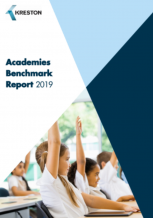With more than 200 members in our Academy team, we've got the capacity and expertise to meet your needs.
Academy trusts change gear on central issue
5th January 2021
Do you have concerns about your Academy Trust central function?
According to the latest Department for Education (DfE) data for 1 September 2018, there are now 2,830 Academy Trusts of which 1,144 are Multi Academy Trusts (MATs).
Of these MATs, 122 have more than 10 schools and 219 have 6-10 schools, so the sector is changing gear again.
This evolution is no surprise given the recent comment by Sir David Carter about “looking to grow offshoots of trusts he knows already work”.
Growth strategy
The right growth is exactly what the sector needs in order to demonstrate that educational outcomes are improved when a school becomes an academy.
However, this often brings difficulties in the delivery of back office functions.
A MAT is no different to any other business and as it grows it needs to ensure that the infrastructure is appropriate and that change management is a key element of the growth strategy.
Central function
I have recently had discussions with a number of MATs that are concerned the central function is not operating efficiently.
In my experience there can be a number of reasons for this, but the main ones are usually:
1. The capacity of the central team has not expanded in line with the growth of the MAT. This is typically because a MAT growing from say 5 to 8 schools cannot afford to put the structure in place prior to the growth, due to lack of funding.
2. There may be a delay in all academies adopting the MAT central procedures, which can result in both duplication of tasks and tasks not being undertaken.
3. The skills required to operate the central team of a large or growing MAT may not be available simply by combining the skills of the schools joining together.
Risk indicators
Whatever the reason for an inefficiency in the central team, there are some indicators that trustees can look out for that will flag a risk that something is not working as it should.
These indicators include:
1. Late management information (must now be given to the chair monthly)
2. Incomplete management information. As per the Academies financial Handbook 2018; as a minimum it must include:
- Financial performance (Income and expenditure)
- Financial position (Balance sheet)
- Budget variance reports
- Rolling 12-month cash flow forecasts
- Supporting narrative as appropriate
- Key financial performance indicators
3. Delays in implementing the actions agreed by either full board or sub committees e.g. recruitment plans for the central team
4. High levels of sickness in the central team
5. Complaints from individual academies regarding the service provided by the central team
6. Failure to comply with annual requirements, such as the review of the finance policy and scheme of delegation
7. Cash flow issues due to non-submission of VAT claims/returns
8. Above average complaints from staff about incorrect Payroll
9. Delays during the external audit process, or significant year-end adjustments
10. Inaccurate/unrealistic ESFA returns, in particular the budget Forecast Return.
Intervention
If you are concerned that the central function might not be operating as efficiently or effectively as it should then it could be time for the Trust Board to intervene.
One argument we often hear is that a MAT cannot afford to put the right level of resource into the central team to ensure it is functioning properly. I would argue that as a Trustee, you can’t afford not to.
Contact me
If you would like to discuss in confidence any concerns you might have about your Academy Trust then please contact me on 01752 262611.





